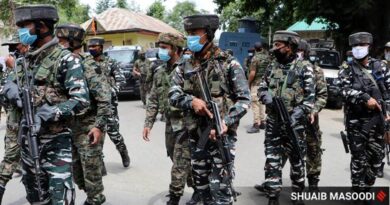In second wave, Covid claiming more lives in rural Punjab than urban pockets
ressRural Punjab is facing a case fatality rate of 2.8 per cent against CFR of 0.7 per cent in the state’s urban areas. Experts said that ignorance about early symptoms, self-medication or treatment through Registered Medical Practitioners and late arrival in hospital are the major causes behind the CFR climbing in the rural belt.
Health Department records revealed that 84 per cent of patients from the rural areas arrive in hospital with severe Covid symptoms and most of them are without their RT-PCR test, which is conducted only after their admission.
High death rate in rural areas is a major contributor to Punjab’s CFR, which is currently 2.45 per cent and is more than double the national CFR which is 1.12 per cent.
The Covid-19 bulletin of the state also reveals a trend where districts with more rural populations are reporting high death rates during the second wave beginning of this year, with a surge in deaths in the past two months.
 *Data from March 1 till April 27
*Data from March 1 till April 27
For instance Hoshiarpur district which has 12.4 lakh rural population and 3.3 lakh urban population (as per 2011 census) has seen just 63 deaths from January 1 to February 28 this year (an increase of 20 per cent in death rate in two months). However, from March 1, a period during which the second wave started spreading, to April 27 in less than two months, the district witnessed 337 deaths, which is an increase of 90 per cent in deaths in past less than two months.
In Hoshiarpur, in March, 50 per cent deaths took place due to late referral to the hospital and 50 per cent patients had died within 24 hours after reaching the hospital.
Nawanshahr district, the first hotspot of the state during the first wave, had only 35 deaths in the first two months of this year which was a 42 per cent increase in death rate. But from March to April till date, the district has recorded 97.4 per cent increase in death rate by reporting 115 deaths in the last two months.
Similarly Gurdaspur district, which has 16 lakh urban and 6.5 lakh rural population, has seen an increase of 65 per cent in death rate from March 1 to April 27 by reporting 185 deaths against 14 per cent increase from January 1 to February 28, when just 35 deaths were reported in two months.
In Tarn Taran, where rural population is over 9 lakh against urban 1.4 lakhs, the death rate has seen only 8 per cent increase in first two months of the year, while the next two months (March and April till date) have seen 85 per cent increase as the district has reported 95 death from March 1 to April 27 against 8 death in January and February months this year.
Bathinda district too has similar story. Only 25 deaths were reported in the first two months here, but in the next two months 94 deaths have been reported.
Like these five districts with more rural populations, over half a dozen districts with more rural populations in Punjab are reporting the same trend in the second wave especially in the past two months.
Contrary to these, the districts with more urban population though have high death rate, but the percentage of increase in the death rate is lesser in these districts compared to the districts with more rural population.
Ludhiana, which has 20 lakh urban population against 14 lakh rural (according to 2011 census) has recorded 1,322 deaths, which is highest in the state during this pandemic till April 27. The district has reported 967 deaths till January 1 this year. In the past four months 355 deaths were reported including 63 in the first two months (6.5 per cent increase) and 292 from March 1 to April 27, which is an increase of 28 per cent.
Similarly Jalandhar and Mohali districts too have more urban population than the rural. In Jalandhar, there was a 9.6 per cent increase in death rate in the first two months of the year and 50 per cent increase from March 1 to April 27 with 1,060 total deaths till date.
In Mohali district, which has the highest Covid active cases in the state with 8,235 patients currently, there was a 13 per cent increase in death rate in the first two months and 47 per cent increase in death rate from March 1 to April 27.
Officials said that there is a huge need to make people aware in the rural areas where the majority of people are not wearing the mask while moving around and visiting each other’s place in the villages.
Dr Rajesh Bhaskar, State Covid-19 Nodal Officer, said that the main reason behind the high death rate among the rural patients is that they are reporting at the eleventh hour.
He said that in rural areas there is lack of awareness among the people who are assuming the early symptoms of the Covid as common flu and are not getting their tests done and coming to the hospitals when there is very little hope. He said that 84 per cent patients of rural areas are landing in the hospitals directly and upon testing in the hospitals they are coming positive.
A senior officer in the Health Department also said that in rural areas health workers are making people aware and even sampling teams are also sent but people depend on their local doctors, who are treating Covid patients by giving common flu medicine instead referring them to the health department.




